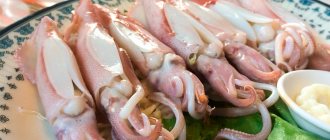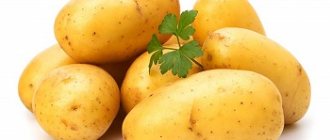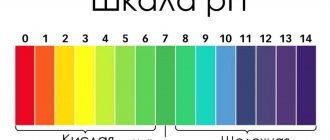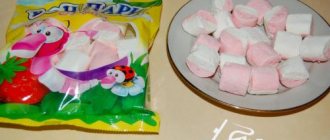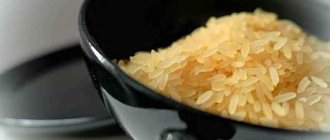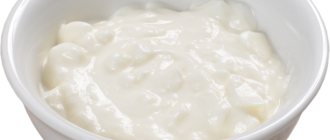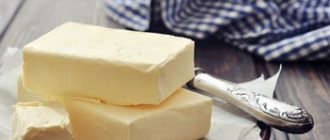Properties of Poshekhonsky cheese
Nutritional value and composition | Vitamins | Minerals
How much does Poshekhonsky cheese cost (average price for 1 kg)?
Moscow and Moscow region.
255 rub.
We are all well aware of the centuries-old traditions and successes of European cheese makers. Gourmets praise French and Italian blue cheeses for their unsurpassed taste and piquant aroma. Dutch cheeses are incredibly popular. We make sandwiches or sushi with the famous soft Philadelphia cream cheese.
Nowadays, you won’t surprise anyone with such names as Ricotta, Cheddar or Dor Blue. We have learned to understand cheese and for special or festive occasions we choose only famous and proven varieties. Today we would like to draw your attention to the successes of domestic cheese makers, which are usually left out.
Often the products of our production, including cheeses, are not so advertised and known, but this does not detract from their merits. There is a small town in the Yaroslavl region that bears the beautiful and sonorous name Poshekhonye. The history of the city goes back more than a century. The city of Poshekhonye is famous for its temples and cheese.
A city resident named Pavel Anatolyevich Avdienko worked at a local cheese factory for many years, which eventually resulted in his invention of Poshekhonsky cheese. It turns out that the domestic cheese maker carefully studied the history of cheese making in Russia and Holland in order to make his own variety of Poshekhonsky hard rennet cheese, based on ancient recipes.
Cheesemaker Avdienko set himself the difficult task of reducing the ripening period of Dutch cheese as much as possible, but at the same time not losing the taste and consumer qualities of the product. Constant experiments with ingredients eventually led to the development of a unique recipe and method for producing Poshekhonsky cheese.
What is noteworthy is that the domestic cheesemaker constantly consulted with the famous German specialist in Dutch cheeses and part-time Moscow professor R.E. Gerlach. The production of Poshekhonsky cheese began in the USSR in the post-war years. At that time, every food product was worth its weight in gold. Therefore, master cheese makers in Yaroslavl, under the leadership of Avdienko, decided that they would begin to make a new Poshekhon cheese from pasteurized or normalized milk.
The fat content of such cow's milk is reduced, which reduces the cost of the cheese production process. To produce Poshekhonsky cheese, bacterial starters and rennet are added to cow's milk. The ripening process of Poshekhonsky cheese takes only 30 days; the cheese is produced in the form of round heads. Poshekhonsky cheese is characterized by a color range from white to light yellow; oval or round eyes (cheese holes) are visible on the cut of the cheese.
Application
Poshekhonsky cheese has a pronounced creamy, slightly spicy taste. This product is served as a snack, as an addition to coffee or tea, and used for sandwiches and canapés. This cheese is also taken as an ingredient in various salads and used in the preparation of pizza and other dishes. Poshekhonsky cheese has a pleasant milky taste and aroma. This is a healthy and natural product.
Market Analytics
- COVID-19 is changing the rules of the game in the cosmetics market
- Beauty of the future: cosmetic innovations 2020
- New ingredients are the driving force of the cosmetics industry
Convenient search for beauty salons on our website
Beauty salons in Moscow Beauty salons in St. Petersburg Beauty salons in Ekaterinburg Beauty salons in Novosibirsk
Latest blog posts on our website
- Naturecream / Geranium (Pelargonium) oil for skin health and beauty
- Prostye-sovety / Save on a beauty salon: procedures that can be done at home
- Naturecream / Growth Factor - brings back youth?
- Oksana-Lezina / 3 effective abdominal exercises from a fitness instructor for beginners
- Prostye-sovety / Making perfect curls at home
- Prostye-sovety / Which hair removal method to choose
- Naturecream / Wrinkles Puppets
- Naturecream / PEPHA-TIGHT - instant skin lifting
- Naturecream / Blue light - a danger to the skin
- Naturecream / Cocoa Butter – A treat for the skin
Latest forum topics on our website
- Mrs._Smith / Badly sunburned! What to do?((
- Ice / Is it necessary to combine fitness classes with a diet?
- Antonova / What can be used for hair loss?
- Radio operatorKat / Who was on a protein diet?
- Suzanna / Mesotherapy on the face
Other articles in this section
| Cottage cheese 0% (low-fat) Cottage cheese is a fermented milk product that is obtained by coagulating milk protein and separating whey from it. Low-fat cottage cheese is made from low-fat milk and does not differ in taste from regular full-fat cottage cheese. It is also called dietary. It combines the maximum benefits of milk and an ideally selected composition of nutrients. |
| Feta Cheese Feta cheese is the national Greek cheese and is white in color. Sheep or goat milk is used to make it (the first option is the most common). |
| Milk 2.5% Milk is a popular and beloved product given by female animals. This is the first thing a person tries in his life. The most widely consumed is cow's milk, on which more than one generation of people has grown up. By drinking at least half a glass of milk a day, you nourish your body with various beneficial substances. |
| Alpine cheese France and Switzerland are considered to be the birthplace of Alpine cheese. It is there that it is made according to a traditional recipe, observing all the nuances, because there it is customary to eat this product every day. Quite often it is produced directly on the pasture. This product belongs to the group of hard rennet cheeses. |
| Cottage cheese 8% Cottage cheese is a fermented milk product obtained as a result of fermentation of sour milk. After decanting the whey, a pure product remains, ready for use. Cottage cheese is the main source of calcium for our body. Cottage cheese is classified according to its fat content. |
| Curdled milk 3.2% Curdled milk is a fermented milk product that has been eaten since ancient times and has come down to us unchanged. |
| Milk 0.7% Milk is probably the most widely consumed product in the world. This drink is consumed in every corner of the world, combining it with various semi-finished products, drinking it just like that and using it in a variety of recipes. Since ancient times, people have been using milk as a staple food, so many different types of milk are known, obtained from different animals. |
| Ginger milk Ginger milk is a special drink. It has a specific pungent taste and aroma due to ginger root. Thanks to its refined and pleasant taste, this product is gaining more and more trust among consumers. |
| Mare's milk Mare's milk is a product that is a traditional drink in eastern countries. It is well absorbed by the body of any person, therefore, as a rule, mare’s milk is consumed as an independent life-giving drink. |
| Paneer Cheese Paneer Cheese is a traditional Indian homemade cheese. India is known for its culinary traditions and healthy food. This cheese is made by removing excess liquid from the curd. Paneer cheese can be considered a curd product, but it has all the characteristics of cheese. The calorie content of this cheese depends on the method of its preparation and the fat content of the milk used. |
Harm of Poshekhonsky cheese
You will have to give up Poshekhonsky cheese only if you have:
- lactose intolerance;
- individual intolerance to product components;
- obesity;
- hypertension;
- exacerbation of gastritis;
- increased acidity.
Although the calorie content of Poshekhon cheese is not so high, the percentage of fat in it will not please you. It is recommended to remove it from the diet of people who are prone to obesity. There are problems in the functioning of the kidneys in patients with urolithiasis and pyelonephritis. If such a situation arises, it is worth reducing the amount of product in the diet to a minimum. Cheese should be eaten in moderate portions, without overeating, because too high a percentage of consumption of this product threatens to exceed the normal dose of tryptophan in the body, which can lead to sleep disorders, migraines, and nightmares. You need to be very careful when choosing a product. Its storage must comply with all appropriate conditions, and the expiration date should not exceed the specified dates.
Calorie content of Poshekhonsky cheese. Chemical composition and nutritional value.
Nutritional value and chemical composition of “Poshekhonsky cheese”.
The table shows the nutritional content (calories, proteins, fats, carbohydrates, vitamins and minerals) per 100 grams of edible portion.
| Nutrient | Quantity | Norm** | % of the norm in 100 g | % of the norm in 100 kcal | 100% normal |
| Calorie content | 345 kcal | 1684 kcal | 20.5% | 5.9% | 488 g |
| Squirrels | 26 g | 76 g | 34.2% | 9.9% | 292 g |
| Fats | 27 g | 56 g | 48.2% | 14% | 207 g |
| Organic acids | 1.7 g | ~ | |||
| Water | 41.9 g | 2273 g | 1.8% | 0.5% | 5425 g |
| Ash | 4.3 g | ~ | |||
| Vitamins | |||||
| Vitamin A, RE | 258 mcg | 900 mcg | 28.7% | 8.3% | 349 g |
| Retinol | 0.23 mg | ~ | |||
| beta carotene | 0.17 mg | 5 mg | 3.4% | 1% | 2941 g |
| Vitamin B1, thiamine | 0.03 mg | 1.5 mg | 2% | 0.6% | 5000 g |
| Vitamin B2, riboflavin | 0.3 mg | 1.8 mg | 16.7% | 4.8% | 600 g |
| Vitamin B4, choline | 15.4 mg | 500 mg | 3.1% | 0.9% | 3247 g |
| Vitamin B5, pantothenic | 1.16 mg | 5 mg | 23.2% | 6.7% | 431 g |
| Vitamin B6, pyridoxine | 0.15 mg | 2 mg | 7.5% | 2.2% | 1333 g |
| Vitamin B9, folates | 39 mcg | 400 mcg | 9.8% | 2.8% | 1026 g |
| Vitamin B12, cobalamin | 0.62 mcg | 3 mcg | 20.7% | 6% | 484 g |
| Vitamin C, ascorbic acid | 0.8 mg | 90 mg | 0.9% | 0.3% | 11250 g |
| Vitamin D, calciferol | 0.84 mcg | 10 mcg | 8.4% | 2.4% | 1190 g |
| Vitamin E, alpha tocopherol, TE | 0.5 mg | 15 mg | 3.3% | 1% | 3000 g |
| Vitamin H, biotin | 4.2 mcg | 50 mcg | 8.4% | 2.4% | 1190 g |
| Vitamin K, phylloquinone | 2.3 mcg | 120 mcg | 1.9% | 0.6% | 5217 g |
| Vitamin RR, NE | 6.7 mg | 20 mg | 33.5% | 9.7% | 299 g |
| Niacin | 0.2 mg | ~ | |||
| Macronutrients | |||||
| Potassium, K | 95 mg | 2500 mg | 3.8% | 1.1% | 2632 g |
| Calcium, Ca | 1000 mg | 1000 mg | 100% | 29% | 100 g |
| Magnesium, Mg | 45 mg | 400 mg | 11.3% | 3.3% | 889 g |
| Sodium, Na | 860 mg | 1300 mg | 66.2% | 19.2% | 151 g |
| Sera, S | 260 mg | 1000 mg | 26% | 7.5% | 385 g |
| Phosphorus, Ph | 640 mg | 800 mg | 80% | 23.2% | 125 g |
| Chlorine, Cl | 1326 mg | 2300 mg | 57.7% | 16.7% | 173 g |
| Microelements | |||||
| Iron, Fe | 1 mg | 18 mg | 5.6% | 1.6% | 1800 g |
| Manganese, Mn | 0.1 mg | 2 mg | 5% | 1.4% | 2000 g |
| Copper, Cu | 60 mcg | 1000 mcg | 6% | 1.7% | 1667 g |
| Selenium, Se | 14.5 mcg | 55 mcg | 26.4% | 7.7% | 379 g |
| Zinc, Zn | 3.5 mg | 12 mg | 29.2% | 8.5% | 343 g |
| Essential amino acids | 9.52 g | ~ | |||
| Arginine* | 0.79 g | ~ | |||
| Valin | 1.27 g | ~ | |||
| Histidine* | 2.5 g | ~ | |||
| Isoleucine | 0.99 g | ~ | |||
| Leucine | 1.96 g | ~ | |||
| Lysine | 1.57 g | ~ | |||
| Methionine | 0.78 g | ~ | |||
| Methionine + Cysteine | 0.83 g | ~ | |||
| Threonine | 1.05 g | ~ | |||
| Tryptophan | 0.7 g | ~ | |||
| Phenylalanine | 1.2 g | ~ | |||
| Phenylalanine+Tyrosine | 2.5 g | ~ | |||
| Nonessential amino acids | 16.75 g | ~ | |||
| Alanin | 0.71 g | ~ | |||
| Aspartic acid | 2.05 g | ~ | |||
| Glycine | 0.43 g | ~ | |||
| Glutamic acid | 4.96 g | ~ | |||
| Proline | 2.61 g | ~ | |||
| Serin | 1.35 g | ~ | |||
| Tyrosine | 1.3 g | ~ | |||
| Cysteine | 0.05 g | ~ | |||
| Sterols (sterols) | |||||
| Cholesterol | 80 mg | max 300 mg | |||
| Saturated fatty acids | |||||
| Saturated fatty acids | 13.9 g | max 18.7 g | |||
| Monounsaturated fatty acids | 7.5 g | min 16.8 g | 44.6% | 12.9% | |
| Polyunsaturated fatty acids | 0.7 g | from 11.2 to 20.6 g | 6.3% | 1.8% | |
| Omega-6 fatty acids | 0.7 g | from 4.7 to 16.8 g | 14.9% | 4.3% |
The energy value of Poshekhonsky cheese is 345 kcal.
Primary Source: Created in the application by the user. Read more.
** This table shows the average levels of vitamins and minerals for an adult. If you want to know the norms taking into account your gender, age and other factors, then use the “My Healthy Diet” application.
How Poshekhonsky cheese is made
The recipe for Poshekhon cheese is not too complicated. To obtain it, it uses a wide range of products. Required:
- pasteurized cow's milk (standardized for fat content);
- rennet extract;
- bacterial starter cultures.
These components are mixed in large vats, where they are boiled at a low temperature of the 2nd heating. Afterwards the mass is poured into special molds. Traditionally these are round cylinders from which 3.5-7 kg heads emerge. At this point, the ripening stage of the cheese begins. It takes almost a month. And in some productions it was decided to infuse the cheese for 45 days.
The heads or blocks obtained during factory cutting, sealed in individual packaging, are on sale. When you cut the cheese, you immediately notice an even crust, under which there is a very thin subcortical layer. Most often, for better preservation, they are coated with a paraffin composition; another popular packaging is polymer film. The traditional recipe for Poshekhon cheese does not allow the addition of chemical additives. Such a product should be stored at a temperature of 0 to +8°C for no longer than 90 days, the optimal humidity is 80-85%.
